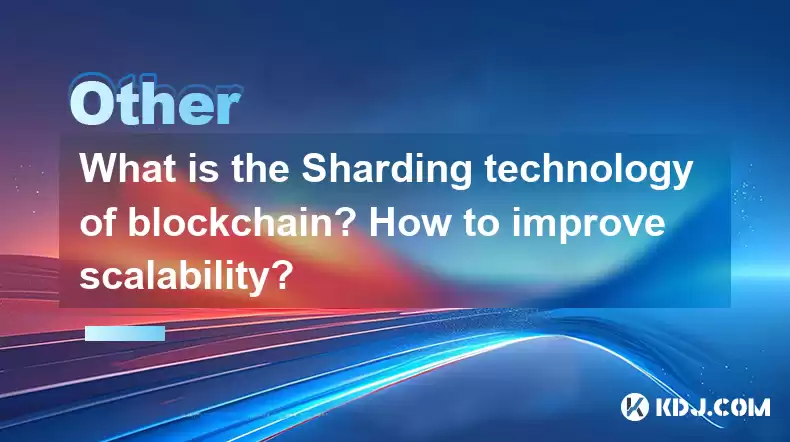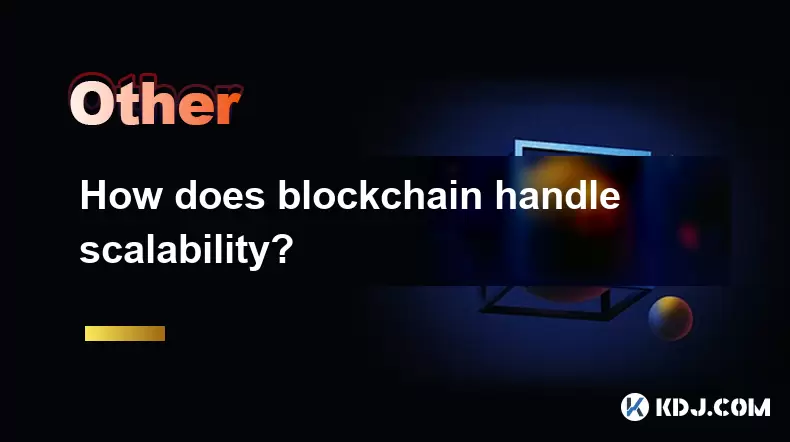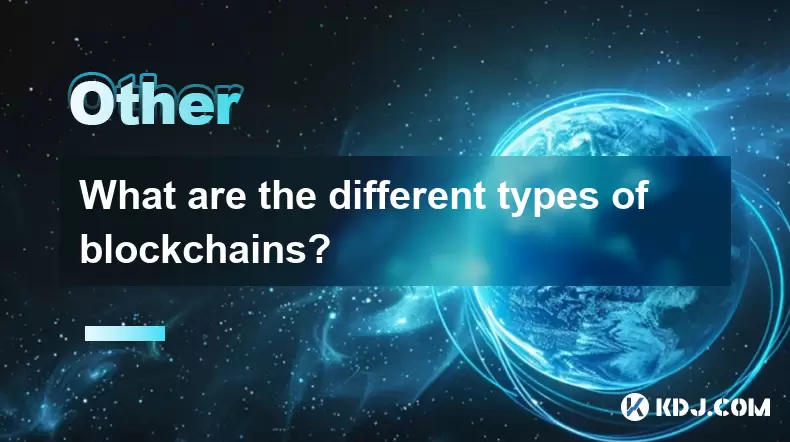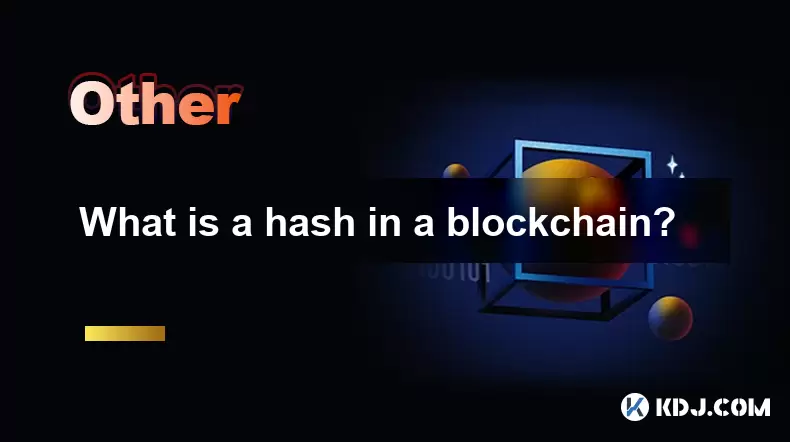-
 Bitcoin
Bitcoin $112400
-1.07% -
 Ethereum
Ethereum $3409
-3.27% -
 XRP
XRP $2.784
-6.60% -
 Tether USDt
Tether USDt $0.9997
-0.03% -
 BNB
BNB $739.3
-2.09% -
 Solana
Solana $158.0
-2.90% -
 USDC
USDC $0.9998
-0.02% -
 TRON
TRON $0.3213
-0.94% -
 Dogecoin
Dogecoin $0.1929
-5.01% -
 Cardano
Cardano $0.6974
-2.82% -
 Hyperliquid
Hyperliquid $36.69
-2.31% -
 Sui
Sui $3.327
-4.80% -
 Stellar
Stellar $0.3672
-5.18% -
 Chainlink
Chainlink $15.65
-3.07% -
 Bitcoin Cash
Bitcoin Cash $525.0
-1.68% -
 Hedera
Hedera $0.2291
-6.00% -
 Avalanche
Avalanche $20.91
-2.96% -
 Ethena USDe
Ethena USDe $1.000
0.00% -
 Toncoin
Toncoin $3.520
-1.12% -
 UNUS SED LEO
UNUS SED LEO $8.968
0.14% -
 Litecoin
Litecoin $105.7
0.26% -
 Shiba Inu
Shiba Inu $0.00001181
-1.79% -
 Polkadot
Polkadot $3.492
-2.08% -
 Uniswap
Uniswap $8.800
-3.10% -
 Dai
Dai $0.9999
-0.01% -
 Monero
Monero $289.9
-3.17% -
 Bitget Token
Bitget Token $4.243
-1.27% -
 Pepe
Pepe $0.00001006
-3.67% -
 Cronos
Cronos $0.1248
-5.68% -
 Aave
Aave $249.7
-2.50%
What is the Sharding technology of blockchain? How to improve scalability?
Sharding splits blockchain data into shards for parallel processing, boosting scalability by increasing transaction throughput and reducing latency.
Apr 27, 2025 at 05:14 pm

What is the Sharding Technology of Blockchain? How to Improve Scalability?
Blockchain technology has revolutionized the way we think about secure, decentralized transactions. However, as the adoption of blockchain grows, so do the challenges associated with its scalability. One of the most promising solutions to these scalability issues is sharding technology. This article will delve into what sharding technology is, how it works, and how it can be used to improve the scalability of blockchain networks.
Understanding Sharding Technology
Sharding is a database partitioning technique that splits a blockchain's data into smaller, more manageable pieces called shards. Each shard contains a subset of the blockchain's total data and operates independently, processing its own transactions and smart contracts. This division of labor allows the network to process multiple transactions simultaneously, significantly increasing its throughput.
The concept of sharding is not new; it has been used in traditional databases for years to enhance performance. However, applying this technique to blockchain introduces unique challenges due to the need for maintaining security and decentralization.
How Sharding Works in Blockchain
In a sharded blockchain, the network is divided into multiple shards, each responsible for a specific portion of the data. Nodes in the network are assigned to one or more shards, and they only need to process the transactions and data relevant to their assigned shards. This reduces the computational load on individual nodes and allows the network to handle more transactions per second.
For example, if a blockchain network is divided into 100 shards, each shard can process transactions independently. This means the network can theoretically process 100 times more transactions than a non-sharded network, assuming each shard processes transactions at the same rate.
Benefits of Sharding for Blockchain Scalability
Sharding offers several key benefits that directly address the scalability issues faced by blockchain networks:
- Increased Transaction Throughput: By allowing multiple shards to process transactions in parallel, sharding significantly increases the overall transaction throughput of the network.
- Reduced Latency: With fewer transactions to process per node, the time it takes to validate and confirm transactions is reduced, leading to lower latency.
- Improved Resource Utilization: Nodes in a sharded network can focus on processing data relevant to their assigned shards, making better use of their computational resources.
Challenges and Solutions in Implementing Sharding
While sharding holds great promise for improving blockchain scalability, it also introduces several challenges that need to be addressed:
- Security: Sharding can potentially weaken the security of the network, as attackers may target individual shards. To mitigate this, cross-shard communication protocols and random shard reassignment techniques are used to ensure that no single shard becomes a weak point.
- Data Consistency: Ensuring data consistency across shards is crucial. Techniques such as state synchronization and atomic commits help maintain the integrity of the blockchain across all shards.
- Complexity: The implementation of sharding adds complexity to the blockchain architecture. Modular design and thorough testing are essential to manage this complexity and ensure the system's reliability.
Practical Implementation of Sharding
Several blockchain projects have already begun implementing sharding to improve their scalability. Here's a look at how some of these projects are approaching sharding:
Ethereum: Ethereum's sharding implementation, known as Ethereum 2.0, aims to divide the network into 64 shards. Each shard will process its own set of transactions and smart contracts, significantly increasing the network's capacity.
- To implement sharding on Ethereum, developers are following these steps:
- Designing the Sharding Protocol: Defining how shards will be created, managed, and interact with each other.
- Developing Cross-Shard Communication: Ensuring that transactions and data can move seamlessly between shards.
- Testing and Deployment: Rigorous testing of the sharding implementation in testnets before deploying it on the mainnet.
- To implement sharding on Ethereum, developers are following these steps:
Zilliqa: Zilliqa is one of the first blockchain platforms to successfully implement sharding. It uses a proof-of-work (PoW) consensus mechanism to secure its shards and has demonstrated the ability to process thousands of transactions per second.
- Zilliqa's sharding implementation involves:
- Creating Shards: Dividing the network into multiple shards based on the number of nodes.
- Assigning Nodes: Randomly assigning nodes to shards to ensure even distribution of computational power.
- Processing Transactions: Each shard processes its own transactions and communicates with other shards as needed.
- Zilliqa's sharding implementation involves:
Improving Scalability Beyond Sharding
While sharding is a powerful tool for improving blockchain scalability, it is not the only solution. Other techniques can be used in conjunction with sharding to further enhance the performance of blockchain networks:
- Layer 2 Scaling Solutions: Technologies like Lightning Network for Bitcoin and Plasma for Ethereum allow transactions to be processed off the main blockchain, reducing the load on the network.
- Optimized Consensus Mechanisms: Implementing more efficient consensus mechanisms, such as Proof of Stake (PoS) or Delegated Proof of Stake (DPoS), can reduce the time and resources required to validate transactions.
- Data Compression and Pruning: Techniques to compress and prune blockchain data can reduce the storage requirements for nodes, making it easier for more nodes to participate in the network.
Frequently Asked Questions
Q: Can sharding be implemented on any blockchain network?
A: While sharding can theoretically be implemented on any blockchain, the specific architecture and consensus mechanism of a blockchain can affect its feasibility. Networks with more flexible architectures, like Ethereum, are better suited for sharding than those with rigid structures, like Bitcoin.
Q: How does sharding affect the decentralization of a blockchain network?
A: Sharding can potentially impact decentralization if not implemented carefully. Ensuring that nodes are randomly assigned to shards and that cross-shard communication is secure helps maintain the decentralized nature of the network.
Q: Are there any risks associated with sharding?
A: Yes, sharding introduces risks such as reduced security if individual shards are targeted by attackers. However, with proper implementation of cross-shard communication protocols and random shard reassignment, these risks can be mitigated.
Q: How long does it take to implement sharding on a blockchain network?
A: The timeline for implementing sharding can vary significantly depending on the complexity of the blockchain and the resources available. For example, Ethereum's transition to Ethereum 2.0, which includes sharding, has been in development for several years and is expected to take several more years to fully implement.
Disclaimer:info@kdj.com
The information provided is not trading advice. kdj.com does not assume any responsibility for any investments made based on the information provided in this article. Cryptocurrencies are highly volatile and it is highly recommended that you invest with caution after thorough research!
If you believe that the content used on this website infringes your copyright, please contact us immediately (info@kdj.com) and we will delete it promptly.
- Grayscale, Altcoin Trust, and Mid-Cap Mania: What's the Deal?
- 2025-08-03 08:50:16
- XRP, ADA, and the Altcoin Evolution: What's Hot and What's Next
- 2025-08-03 08:30:16
- HBAR Price Check: Will Monthly Gains Hold at This Resistance Level?
- 2025-08-03 08:30:16
- Bitcoin, Cryptos, and Retirees: A New Era of Investment?
- 2025-08-03 08:50:16
- BlockDAG's Presale Power & Active Miners: A New York Minute on Crypto's Hottest Trend
- 2025-08-03 08:55:25
- BlockDAG Presale Heats Up: SUBBD Trails as Innovation Meets Execution
- 2025-08-03 09:00:16
Related knowledge

What is the difference between on-chain and off-chain transactions?
Aug 02,2025 at 04:22pm
Understanding On-Chain TransactionsOn-chain transactions refer to digital asset transfers that are recorded directly on a blockchain ledger. These tra...

What is the double-spending problem and how does blockchain prevent it?
Aug 02,2025 at 01:07pm
Understanding the Double-Spending ProblemThe double-spending problem is a fundamental challenge in digital currency systems where the same digital tok...

What is the difference between a blockchain and a database?
Aug 01,2025 at 09:36pm
Understanding the Core Structure of a BlockchainA blockchain is a decentralized digital ledger that records data in a series of immutable blocks linke...

How does blockchain handle scalability?
Aug 02,2025 at 02:58pm
Understanding Blockchain Scalability ChallengesBlockchain scalability refers to a network's ability to handle an increasing volume of transactions wit...

What are the different types of blockchains?
Aug 03,2025 at 03:01am
Public Blockchains: Open and Decentralized NetworksPublic blockchains are the most widely recognized type of blockchain, characterized by their open a...

What is a hash in a blockchain?
Aug 02,2025 at 05:28am
Understanding the Concept of Hash in BlockchainA hash in the context of blockchain technology refers to a unique digital fingerprint generated by a cr...

What is the difference between on-chain and off-chain transactions?
Aug 02,2025 at 04:22pm
Understanding On-Chain TransactionsOn-chain transactions refer to digital asset transfers that are recorded directly on a blockchain ledger. These tra...

What is the double-spending problem and how does blockchain prevent it?
Aug 02,2025 at 01:07pm
Understanding the Double-Spending ProblemThe double-spending problem is a fundamental challenge in digital currency systems where the same digital tok...

What is the difference between a blockchain and a database?
Aug 01,2025 at 09:36pm
Understanding the Core Structure of a BlockchainA blockchain is a decentralized digital ledger that records data in a series of immutable blocks linke...

How does blockchain handle scalability?
Aug 02,2025 at 02:58pm
Understanding Blockchain Scalability ChallengesBlockchain scalability refers to a network's ability to handle an increasing volume of transactions wit...

What are the different types of blockchains?
Aug 03,2025 at 03:01am
Public Blockchains: Open and Decentralized NetworksPublic blockchains are the most widely recognized type of blockchain, characterized by their open a...

What is a hash in a blockchain?
Aug 02,2025 at 05:28am
Understanding the Concept of Hash in BlockchainA hash in the context of blockchain technology refers to a unique digital fingerprint generated by a cr...
See all articles

























































































